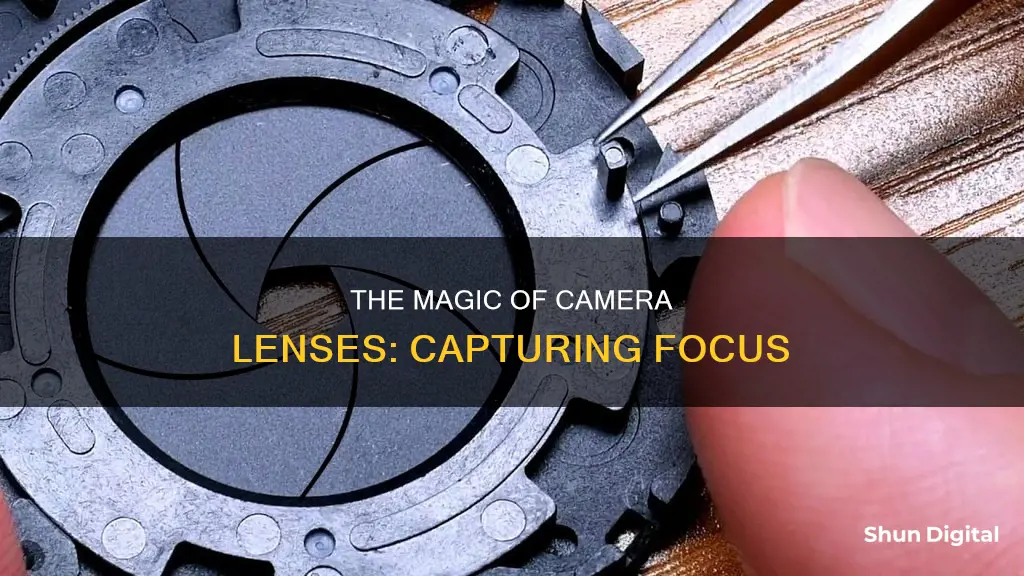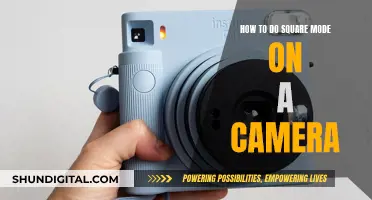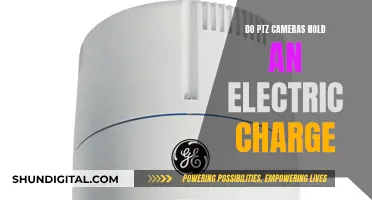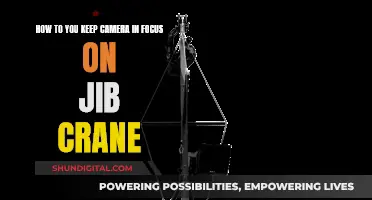
Camera lenses are fascinating pieces of technology that can help photographers capture the world around them in a variety of ways. In simple terms, a camera lens focuses light onto a photosensitive surface, such as film or a digital sensor, to create an image. The lens bends and slows down light, directing it onto the film or sensor, which captures the image. This process is similar to how our eyes work, with light entering through the pupil and being focused onto the back of our eyeball.
The design of a camera lens can vary, with some lenses consisting of a single element, while others have multiple elements that diverge and converge light. These elements are made of curved materials that allow light to pass through them. The size and quality of these elements influence the amount of light that enters the lens and the overall picture quality.
One important aspect of camera lenses is their focal length, which determines the magnification of distant objects. Lenses with longer focal lengths, such as telephoto lenses, make distant objects appear larger. Additionally, the aperture of the lens, controlled by an iris diaphragm, adjusts the amount of light entering the camera, affecting the brightness and depth of field in the final image.
Understanding how camera lenses focus light is crucial for photographers to capture sharp and creative images. By manipulating different variables, such as focal length and aperture, photographers can achieve various effects, from magnifying distant objects to creating blurry backgrounds.
| Characteristics | Values |
|---|---|
| Purpose | To direct light onto the photosensitive surface |
| Components | One or more elements |
| Elements | Individual pieces of glass |
| Groups | One or more elements designated inside the camera |
| Light | Bends and slows as it enters and exits the lens |
| Focus | Controlled by changing the distance between the lens and sensor |
| Autofocus | Phase detection or contrast detection |
What You'll Learn

Manual vs autofocus
Camera lenses focus by bending light through a series of lenses (or "elements") to direct it onto a photosensitive surface (such as film or a digital sensor). This is how an image is formed.
Autofocus systems use tiny, precise motors to adjust the distance between elements and focus the picture automatically. Modern cameras are designed to autofocus accurately in most circumstances. However, there are certain situations where autofocus may struggle, and a photographer may be better served by using manual focus.
When to Use Autofocus
- Action Photography: Autofocus is generally more suitable for capturing moving objects, such as in sports or wildlife photography. This is because the point of focus is constantly changing, and autofocus can adjust much more quickly than manual focus.
- Scenes with Many Objects: Autofocus can be useful when there are multiple objects in the scene, as it can be confusing to manually select the correct point of focus.
- Low-Contrast Scenes: Autofocus relies on contrast to identify objects. In situations with low contrast, such as heavy backlighting, autofocus may perform better than manual focus.
When to Use Manual Focus
- Macro Photography: Manual focus is often preferred for macro photography, as it allows for precise control over the point of focus, which is crucial for this type of photography.
- Low Light Conditions: Autofocus systems depend on light to determine where to focus and may struggle in low-light conditions. Manual focus can be more effective in these situations as it allows the photographer to precisely tell the camera where to focus.
- Shooting Through Glass or Fences: In situations where there is an obstruction between the camera and the subject (such as a window or fence), autofocus may struggle to focus on the correct subject. Manual focus allows the photographer to specify exactly what they want to be in focus.
- Portraits: When shooting portraits, it is crucial to have the subject's eyes in perfect focus. Manual focus gives the photographer complete control over this, ensuring that the eyes are sharp.
- Distance Photography: In situations where the subject is far away, such as landscape photography, manual focus can be more effective at capturing sharp, focused images.
Locking Camera to Portrait Mode in Swift 4
You may want to see also

Long-focus lenses
Long lenses also make it easier to blur the background of an image, even when the depth of field remains the same. This effect is often used to "separate" the subject from the background. Due to their weight, long lenses are often used with a tripod, as the effect of camera shake is magnified.
The most common type of long-focus lens is the telephoto lens, which incorporates a telephoto group to make the physical length of the lens shorter than the focal length. Long-focus lenses are often used in cinematography due to their effects on space and perspective, which differ from the regular human eye. They are a powerful storytelling tool, as they can be used to isolate a subject, compress space, amplify stunts, and more.
Mastering the Art of Hiding Pins in Camera Raw Adjustment Brush
You may want to see also

Aperture adjustment
Aperture refers to the size of the opening in your camera lens. When you take a photo, light passes through this opening and reaches the camera’s sensor, creating an image. The aperture of the lens can be adjusted to make the opening smaller or larger. This can be done manually or automatically, depending on the camera shooting mode you select.
Aperture is measured in f-stops, which represent the ratio of the diameter of the iris diaphragm to the focal length of the lens. The higher the f-stop or “f” number, the smaller the hole. The lower the f-stop or “f” number, the larger the hole.
The aperture scale is logarithmic. This means that each aperture size on the scale is twice as large as the aperture to its right, and half the size of the aperture to its left. This is necessary for the changes in exposure brightness to be discernible to the human eye.
The size of the aperture will affect the exposure of the image, i.e. how light or dark it is. A small aperture lets very little light through, whereas a large aperture lets a lot of light through.
Aperture also controls the depth of field, which refers to the amount of the image that is in focus from front to back. A shallow depth of field means that only part of the image will be in focus, with the rest appearing blurred. This is achieved with a large aperture, such as f/4. A large depth of field means that all or most of the image will be in focus, achieved with a small aperture, such as f/16.
To adjust the aperture on your camera, you will need to turn the dial on the top of your camera to manual mode (M). Then, hold down the AV +/- button to the right of your camera display. As you hold this button, turn the control dial on the top of your camera to the right to get a higher f-stop/smaller hole, or to the left to get a lower f-stop/larger hole.
Avoid Congestion Charges: Know Your Camera Blindspots
You may want to see also

Phase detection
Here's how it works in more detail: when you take a picture with a DSLR camera, light rays enter the lens and are reflected by a partially transparent main mirror positioned at a 45-degree angle. This mirror reflects most of the light vertically into the pentaprism, which converts the vertical light back into a horizontal format so that what you see through the viewfinder is exactly what will be captured.
A small portion of light passes through the main mirror and is reflected by a secondary mirror, also tilted at an angle, towards the Phase Detect/AF Sensor. This light then reaches a group of sensors (two sensors per AF point), where the camera analyses and compares the images. If they don't coincide, the camera instructs the lens to make adjustments until perfect focus is achieved.
The phase-detect system knows if an object is front-focused or back-focused and can send precise instructions to the camera lens on which way to turn its focus. This process is repeated as many times as needed until the images align, at which point the system sends a confirmation that the subject is in focus.
However, it is a complex process that requires precision. The phase detection software must be installed and aligned properly, or it can cause autofocus issues. It may also struggle with low-contrast subjects or in low-light conditions.
Choosing the Right Camera Mode for Wedding Photography
You may want to see also

Contrast detection
This is how our brains work when we use unaided manual focus – we look at edges and move the focus ring until the edge contrast is the hardest, or "sharp". We make large adjustments first, then smaller refinements until we get there.
Are Batteries Included? Camera Shopping Basics
You may want to see also
Frequently asked questions
A camera lens is an optical device that consists of a curved material that allows light to pass through it. It is designed to bend and slow down the light to create an image.
Camera lenses use one or more elements to diverge and converge light, focusing it onto a photosensitive surface, such as film or a digital sensor. This process creates a clear image by directing the light onto a specific point.
Autofocus uses technology like Active AF, Phase Detection, or Contrast Detection to automatically adjust the lens for optimal focus. Manual focus, on the other hand, requires the photographer to adjust the lens themselves by turning a focus ring or using a slider.
Autofocus systems use sensors to detect the focus of an image. Phase Detection divides the incoming light into pairs of images and adjusts the lens until they match. Contrast Detection uses the main sensor to detect the intensity of light, adjusting the lens to maximise sharpness.
The depth of field, or zone of sharp focus, is controlled by the physical size of the sensor, the distance between the camera and the subject, and the aperture setting. Wider apertures (e.g. f/2 to f/4) create a shallower depth of field, while smaller apertures (e.g. f/5.6 onwards) result in a sharper image.







